
In collectible card games, digital collectible card games and collectible miniature wargames, a booster pack is a sealed package of cards or figurines, designed to add to a player's collection. A box of multiple booster packs is referred to as a booster box.
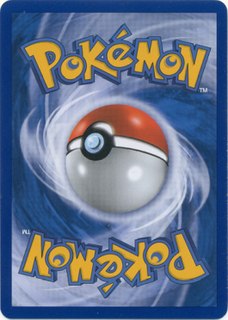
The Pokémon Trading Card Game, abbreviated to PTCG or Pokémon TCG, is a collectible card game based on the Pokémon franchise by Nintendo. It was first published in October 1996 by Media Factory in Japan. In the US, it was initially published by Wizards of the Coast; Nintendo eventually transferred the rights to The Pokémon Company which has published the game since June 2003. As of March 2021, the game has sold over 34.1 billion cards worldwide.
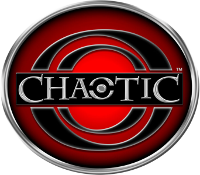
Chaotic was originally a Danish trading card game. It expanded to an online game in America which then became a television program based on the game. The program was able to be seen on 4Kids TV, Jetix, The CW4Kids, Cartoon Network and Disney XD. It was brought over to the United States from Denmark by Bryan C. Gannon and Chaotic USA Entertainment Group, and produced by Chaotic USA Entertainment Group, 4Kids Productions and Bardel Entertainment. The trading card game came out September 6, 2006 in the U.S. and Canada.

The Yu-Gi-Oh! Trading Card Game is a Japanese collectible card game developed and published by Konami. It is based on the fictional game of Duel Monsters created by manga artist Kazuki Takahashi, which appears in portions of the manga franchise Yu-Gi-Oh!, and is the central plot device throughout its various anime adaptations and spinoff series.
Vampire: The Eternal Struggle is a multiplayer collectible card game published by White Wolf Publishing. It is set in the World of Darkness and is based on the Vampire: The Masquerade roleplaying game.
The collectible card game Magic: The Gathering published seven expansion sets from 1993–1995, and one compilation set. These sets contained new cards that "expanded" on the base sets of Magic with their own mechanical theme and setting; these new cards could be played on their own, or mixed in with decks created from cards in the base sets. With Magic's runaway success, many of the printings of these early sets were too small to satisfy the rapidly growing fanbase. Cards from them became rare, hard to find, and expensive. It was not until Fallen Empires and Homelands that Wizards of the Coast was able to print enough cards to meet demand; additionally, Wizards of the Coast published Chronicles, a reprint set that helped fix many of the scarcity issues with the earliest sets.
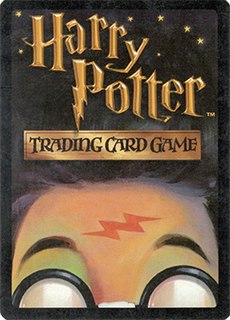
The Harry Potter Trading Card Game is an out-of-print collectible card game based in the world of J. K. Rowling's Harry Potter novels. Created by Wizards of the Coast in August 2001, the game was designed to compete with the Yu-Gi-Oh!, Pokémon and Magic: The Gathering card games. Its release was timed to coincide with the theatrical premiere of the first film in the series. The game was praised for the way it immersed children in the Harry Potter universe. At one point the game was the second best selling toy in the United States; however, it is now out of print.

Dragon Ball Z Trading Card Game is an out-of-print trading card game based on the Dragon Ball series created by Akira Toriyama. The game was produced by Score Entertainment and uses screen captures of the anime to attempt to recreate the famous events and battles seen in the anime. Score then sold the rights to Panini which eventually ceased publishing.

The World of Warcraft Trading Card Game is an out-of-print collectible card game based on Blizzard Entertainment's MMORPG, World of Warcraft. The game was announced by Upper Deck Entertainment on August 18, 2005 and released on October 25, 2006. Players can fight against each other one-on-one, or can join others in order to defeat dungeon/raid bosses based on those in the MMORPG. In March 2010, Upper Deck lost the license from Blizzard Entertainment. The license was acquired by Cryptozoic Entertainment later in the month, with the company announcing that planned card sets would be released.
The Universal Fighting System (UFS) is a collectible card game designed by Jasco Games. Games of UFS represent a fight between two characters in hand-to-hand combat. Characters are drawn from original properties as well as a number of licensed ones, such as Mega Man, Street Fighter, The King of Fighters XIII and Darkstalkers. The sets are cross-compatible – cards from multiple licenses can be included in the same deck, and characters from different universes may face each other in a match.
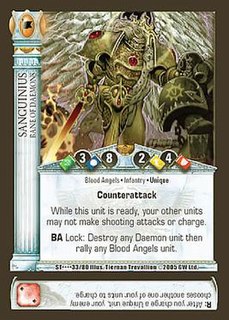
Horus Heresy is an out-of-print collectible card game originally produced in 2003 by Sabertooth Games. The game is set in the Warhammer 40,000 fictional universe developed by parent company Games Workshop. It attempts to recreate the struggle between the Loyalist forces of the Emperor of Mankind and the Traitor forces of Warmaster Horus, during the civil war known as the Horus Heresy. The game's development and sale by the publisher were discontinued in 2008, following financial difficulties at the parent company.
Magic: The Gathering formats are various ways in which the Magic: The Gathering collectible card game can be played. Each format provides rules for deck construction and gameplay, with many confining the pool of permitted cards to those released in a specified group of Magic card sets. The Wizards Play Network, the governing body that oversees official Magic competitive play, categorizes its tournament formats into Constructed and Limited. Additionally, there are many casual formats with the Commander format being one of the most popular formats of the game.
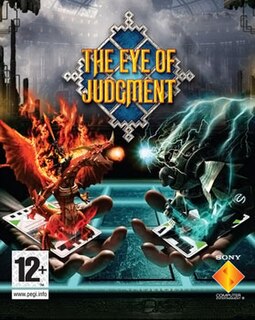
The Eye of Judgment is a turn-based card battle video game for the PlayStation 3 platform, which utilizes the PlayStation Eye camera peripheral. It is the first game to use the peripheral, with which it was available in a bundle in Japan, Europe, the Middle East, and North America. Once planned for release close to the PlayStation 3 launch in November 2006, the game was eventually released on October 25, 2007 as Set 1 in Japan.

The Bleach Trading Card Game is an out-of-print collectible card game from Score Entertainment, and is based on the manga and anime series of the same name.
Chaotic is an animated science fantasy television series produced by 4Kids Entertainment. It was animated by Canadian studio Bardel Entertainment for season 1 and South Korean studio Dong Woo Animation for season 2 and 3. It is based on the Danish trading card game of the same name. Much of the plot is based on the original storyline of the Danish trading card game.
Before its current form the Chaotic Trading Card Game had several names and versions. Starting in Denmark, Dracco Heads was a children's collectors product featuring plastic figurines of strange creatures. In 2000 a trading card game called Grolls & Gorks was published featuring characters and creatures from Dracco Heads. The next year the game was redesigned by Bryan C. Gannon and renamed Chaotic: Now or Never! This version of the card game had many characters and cards on which the current version of the Chaotic game and the television series are based.
The Dragon Ball Collectible Card Game is a collectible card game based on the Dragon Ball franchise, first published by Bandai on July 18, 2008. Bandai relaunched the card game on July 28, 2017.

Magic Duels is a video game based on the popular collectible card game Magic: The Gathering. Magic Duels is a successor to Stainless Games' Magic: The Gathering – Duels of the Planeswalkers and its annual sequels, released from 2009 through 2014. The free-to-play title was released on July 29, 2015, shortly following the physical release of the Magic Origins core set.

The Final Fantasy trading card game, often abbreviated as Final Fantasy TCG or FF-TCG, is a trading card game by Square Enix and Hobby Japan. The first iteration released in Japan in 2011 but never released outside Japan and was discontinued in order to release a second iteration worldwide in October 2016.












